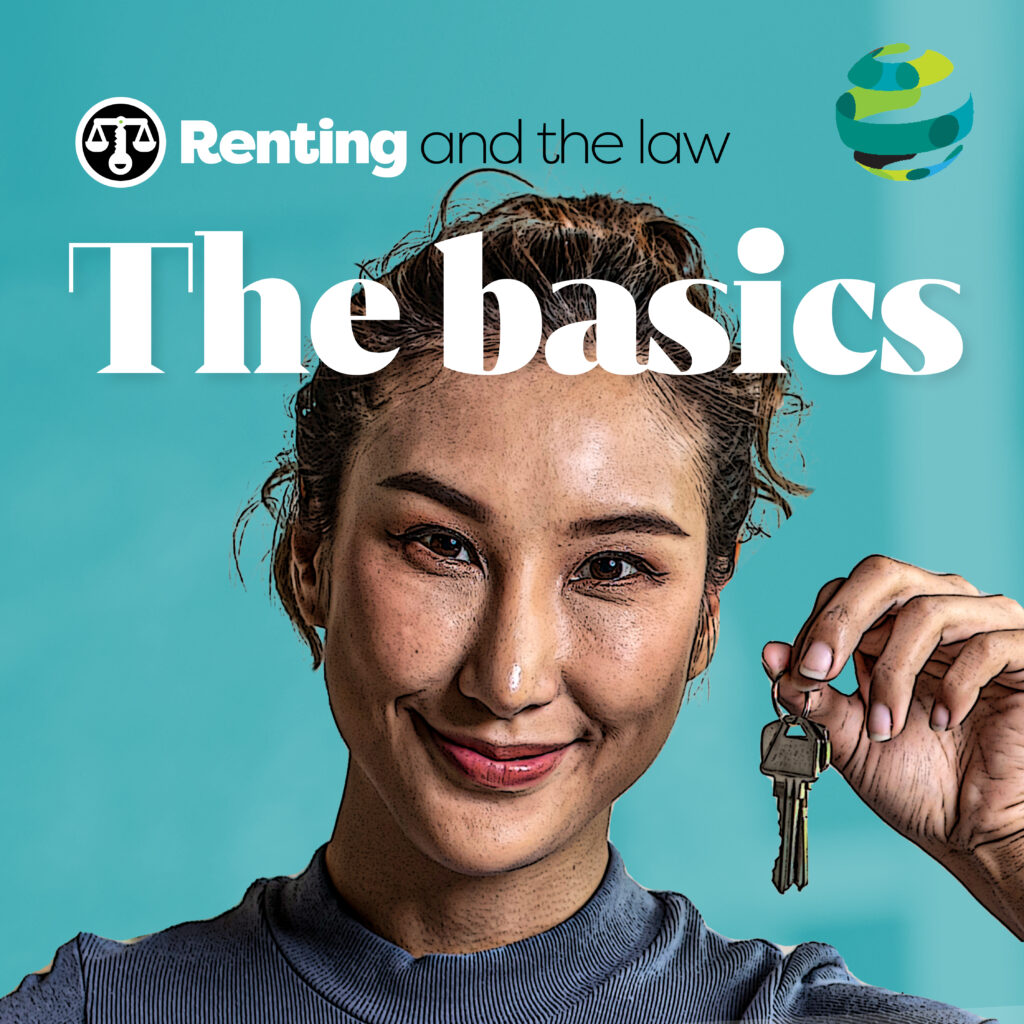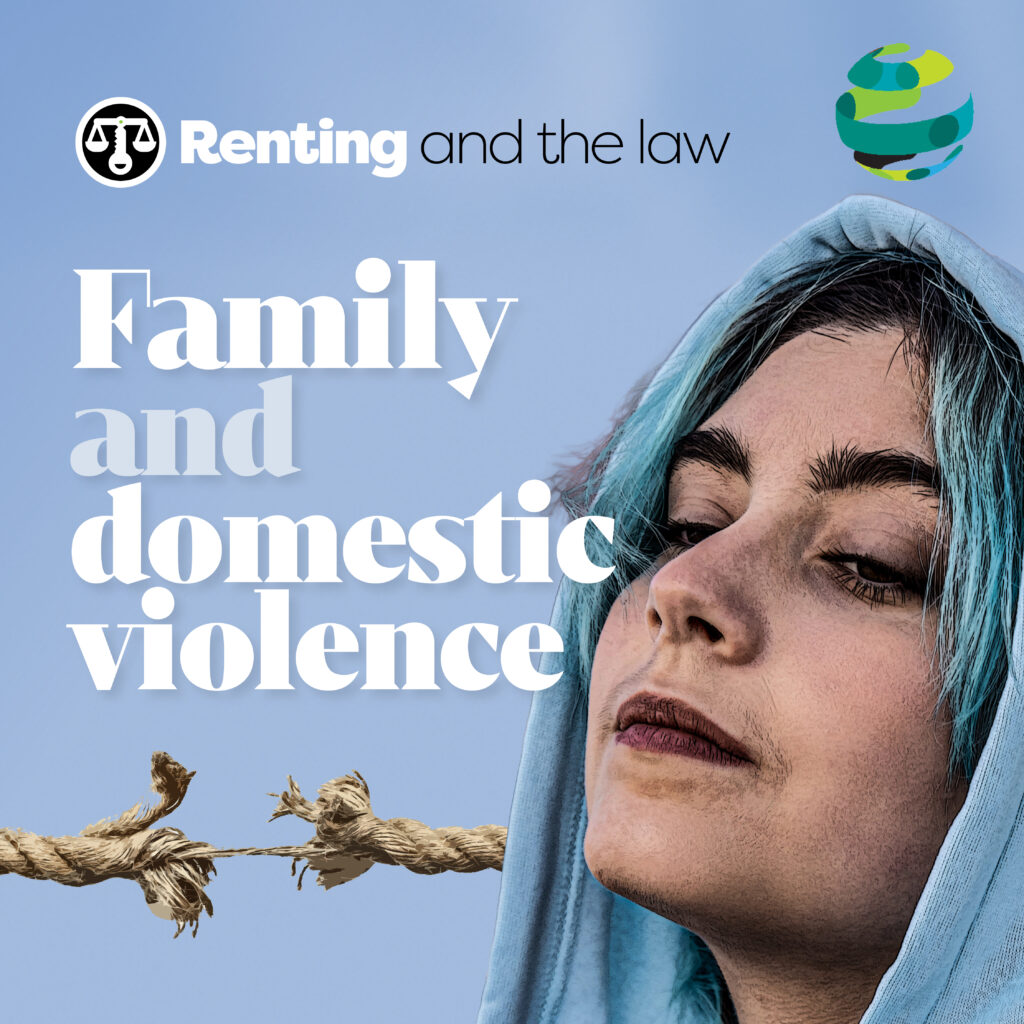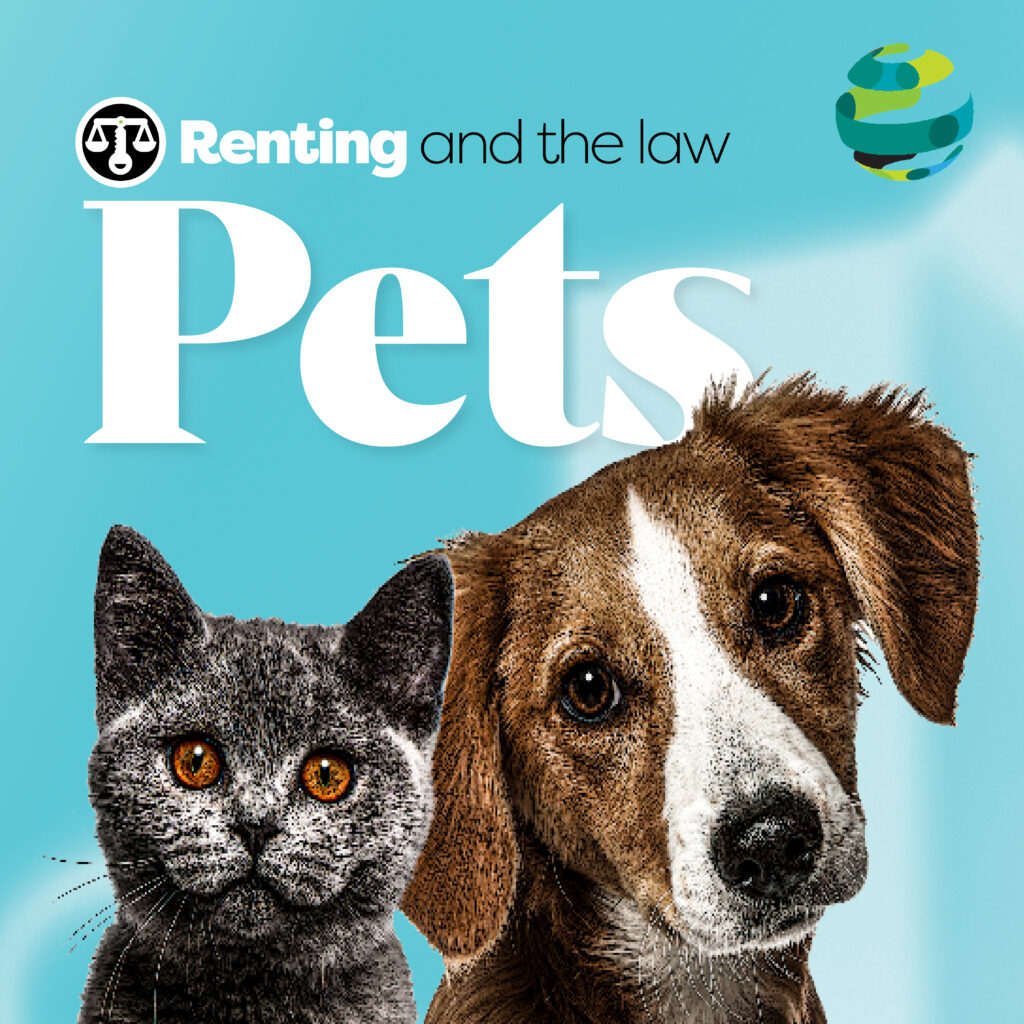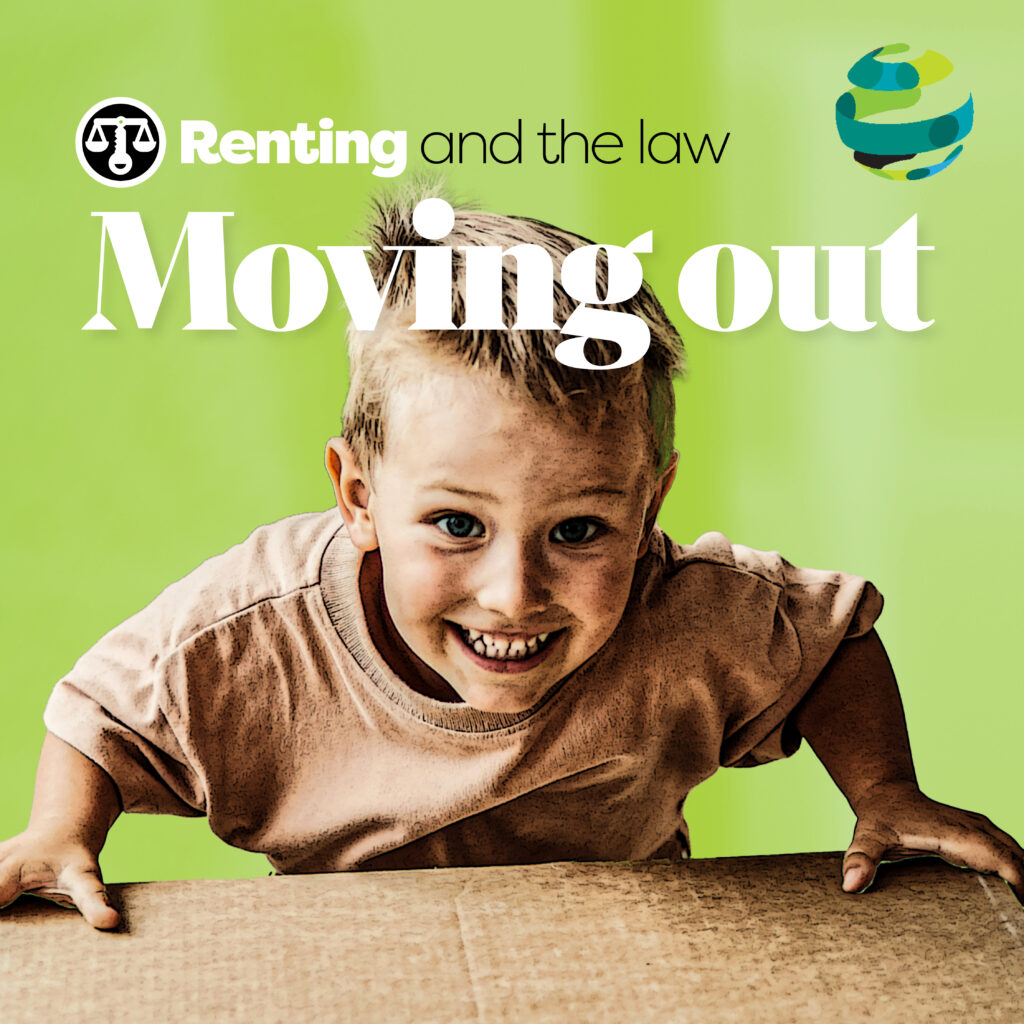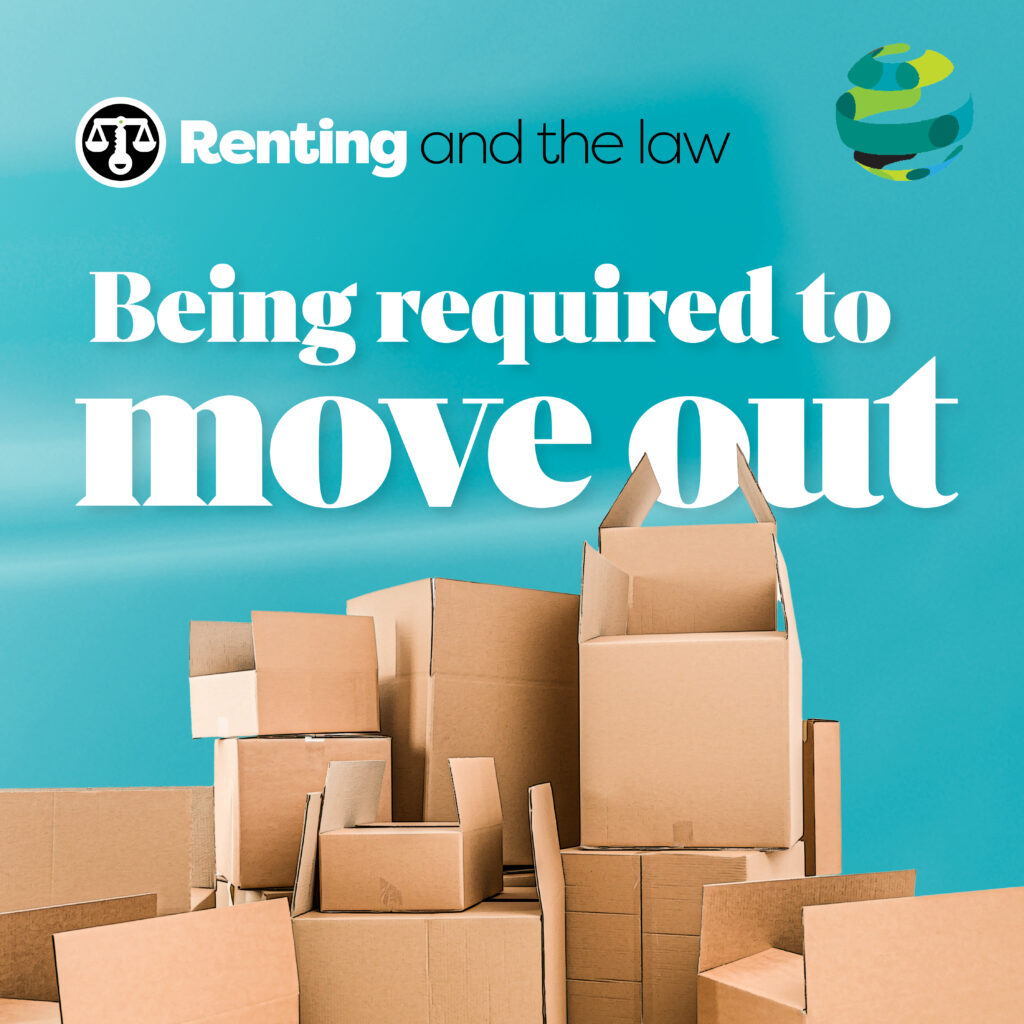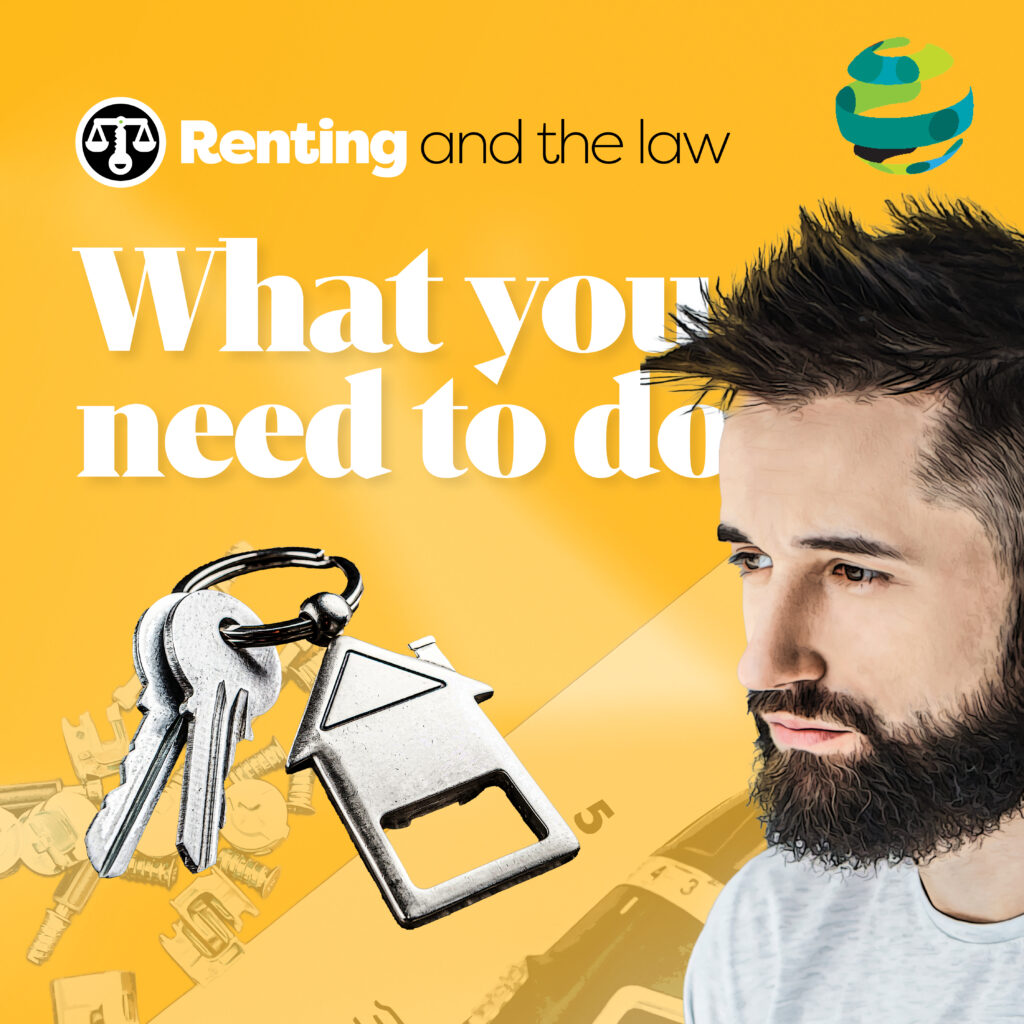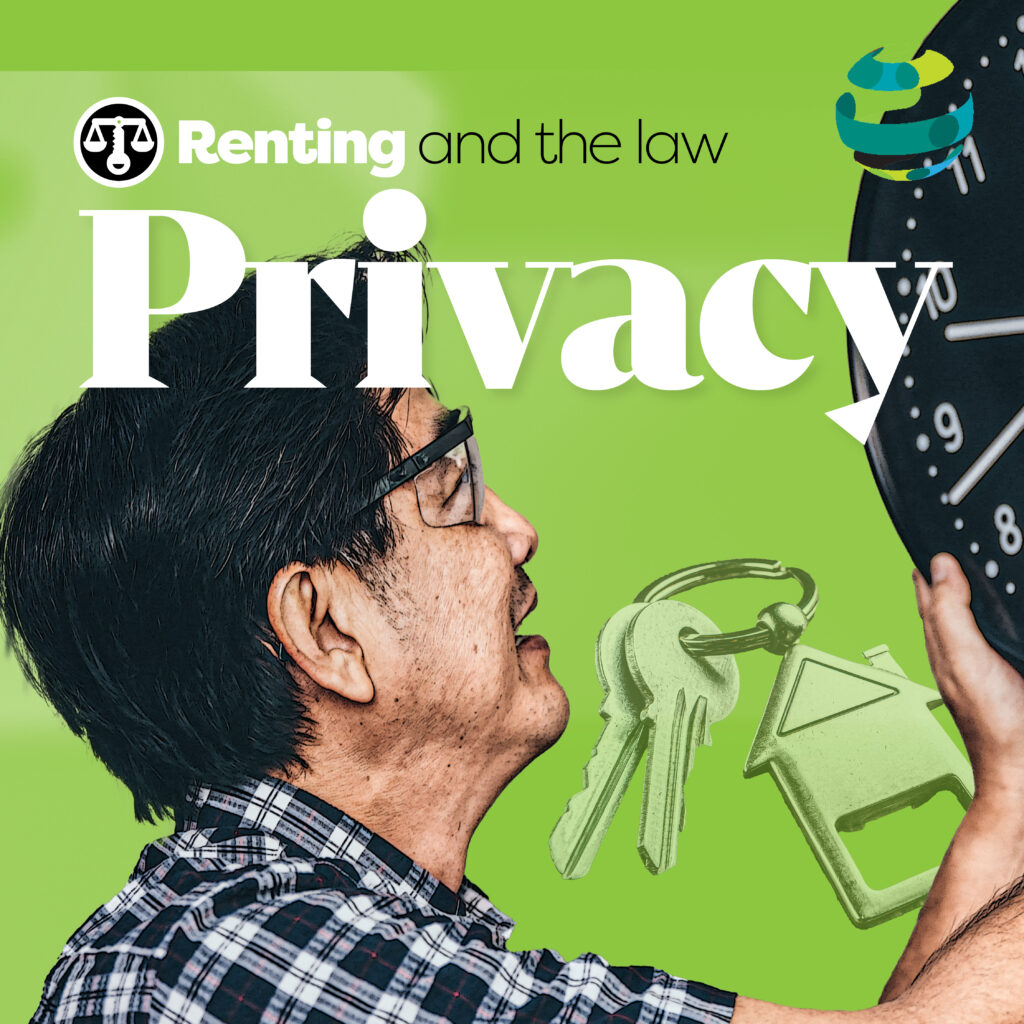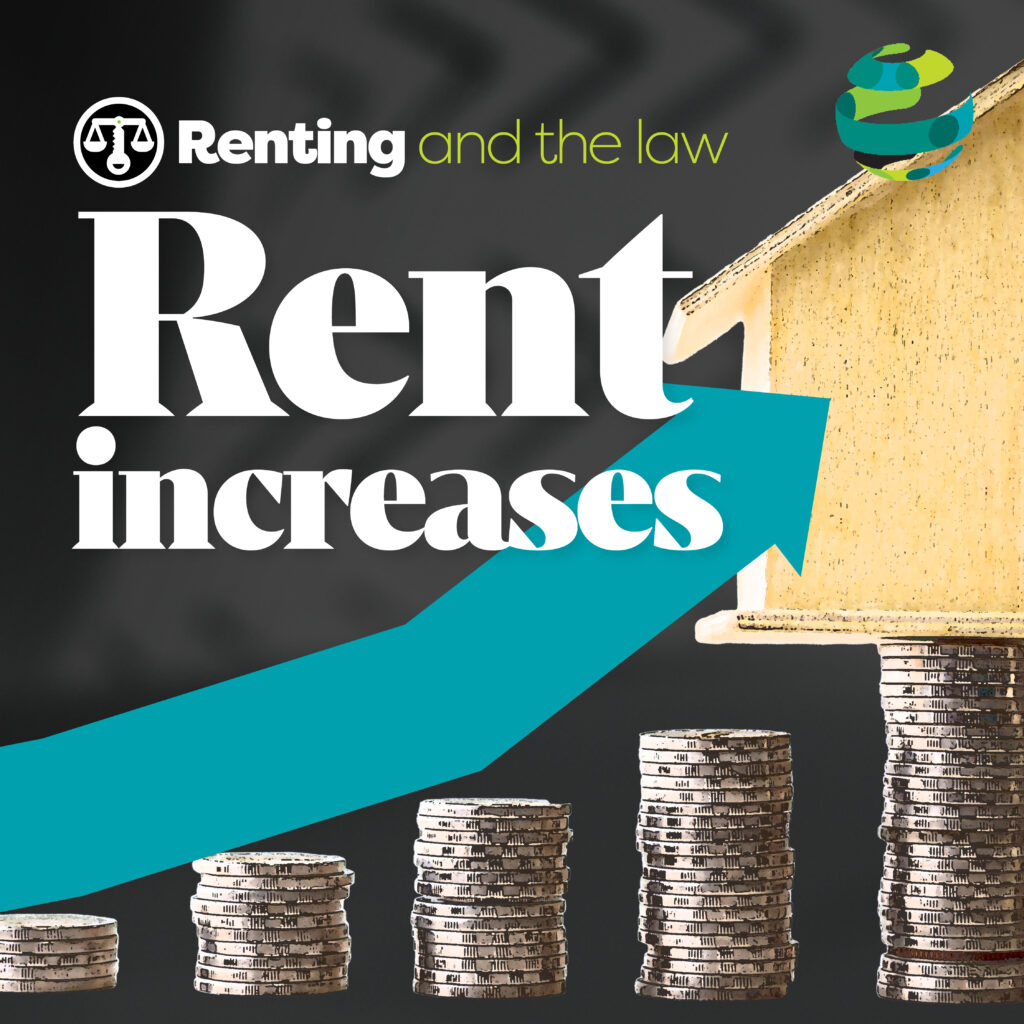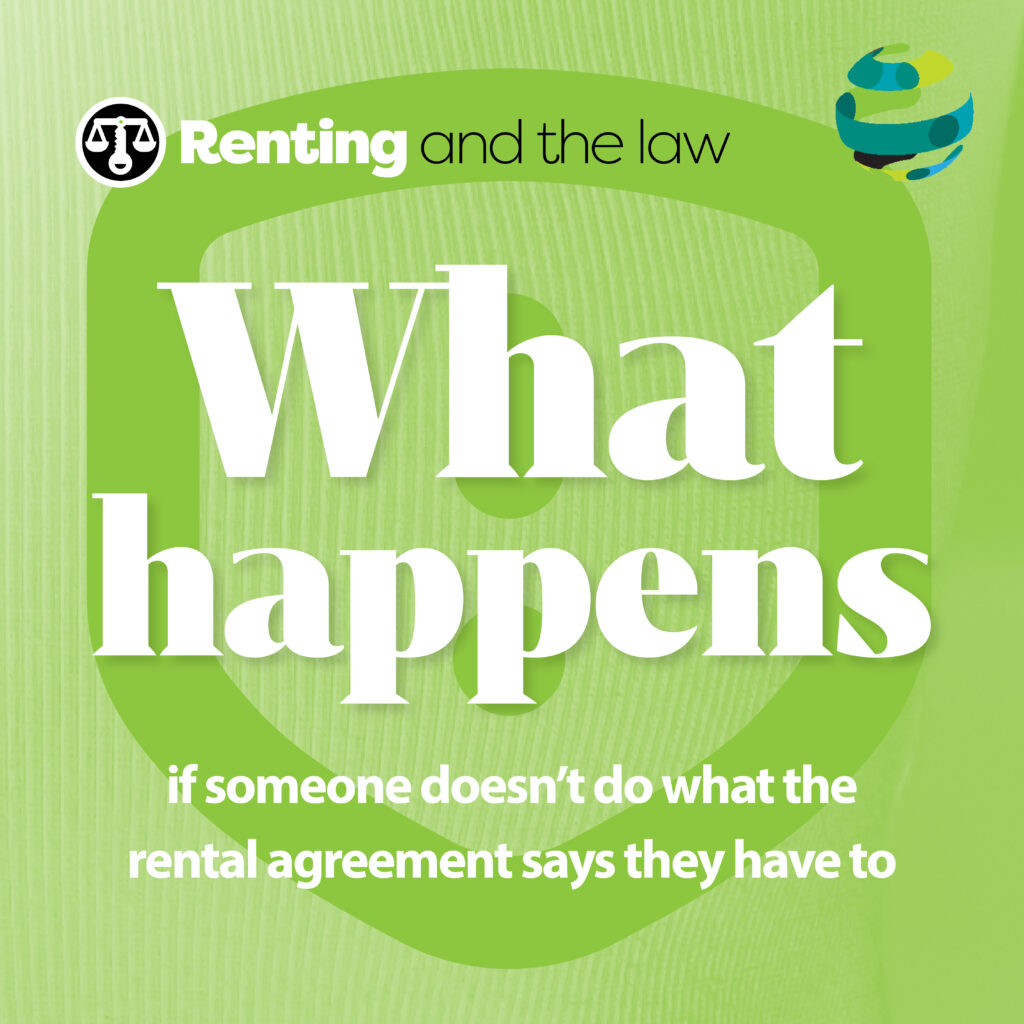Renting
and the law
Know your rights and get useful tips for navigating the ins and outs of renting.

This centre is accredited by

- This is general information only.
- It is not intended to give individual legal advice.
- Each person should seek independent legal advice relating to their special circumstances.
- We do not accept responsibility for any loss or damage caused to anyone who relies on the information in this info sheet.
The most important documents for renting are the rental agreement (this might also be called a residential tenancy agreement or lease agreement) and condition report.
- Make sure you understand what’s in these documents before you sign.
- Never sign a blank or incomplete document or form.
- Cross out any blank spaces.
- Keep a copy of all the documents, especially the ones you sign
- Hot tip: Take a photo or scan of the documents and email them to yourself.
A condition report will tell you about any damage to the property that happened before you started renting.
On the day you move in:
- Write down details of any damage that is not in the condition report e.g. chipped paint, carpet stains, marks on walls, etc.
- Take photos and videos of everything so you can show that you didn’t cause the damage.
Don’t forget the insides of cupboards and wardrobes!
Once you’ve signed the rental agreement, you will usually be asked to pay a bond or security deposit before you move in.
- The bond will usually be the amount of four weeks rent.
- The money for the bond will be kept at the Residential Tenancies Authority Queensland (RTA) which will give you a bond number.
- Keep the bond number so you can get your bond money back when you move out.
- The rental agreement will tell you about situations where the landlord will be allowed to keep your bond at the end of your tenancy, for example if you’ve done a lot of damage to the property.
WHERE TO GET HELP:
YFS Legal
Phone: (07) 3826 1599
Email: [email protected]
Website: https://www.yfs.org.au/yfs-legal
If you have experienced domestic and family violence, the law allows you to:
- move out of the property
- stay at the property and have the perpetrator (respondent) leave
- if the perpetrator must move out due to an ouster order on a DVO,
the perpetrator doesn’t have to pay rent anymore.
Moving out:
You may be able to end your lease early if you can no longer safely continue to live at the property. You can apply to QCAT for a termination order which will allow you to end the lease early due to domestic violence.
Staying:
If you have experienced domestic and family violence you may apply to QCAT to have the lease transferred into your name and have the perpetrator’s name removed from the lease.
To do this, you must have experienced an act of domestic violence from someone who you have any of the followingrelationships with:
- a spousal relationship
- an intimate personal relationship
- a family relationship
- an informal care relationship.
If you lodge an application for a domestic violence order against someone, you can also apply at the same time for the Court to make an “ouster order” which requires the perpetrator to leave/move out of the property you both currently reside at.
When QCAT makes a decision about your application to have the perpetrator removed from the lease, it will consider:
- whether you have applied for a domestic violence/protection order
- if a domestic violence/protection order application was made, whether an order was made or is still in force
- if a protection order was made whether a condition of the order stops the perpetrator from entering or remaining at the property.
If you are in immediate danger, call 000.
If you are experiencing violence or abuse, 1800RESPECT can provide free help and support via their phone line 1800 737 732 or their online live chat at www.1800respect.org.au
You should get permission from the landlord before you change the locks to the property.
If you need to provide evidence of domestic violence to the landlord or anyone acting for them, they are required to keep this information private, they are not allowed to tell anyone else what you tell them.
If you are listed on a Tenancy Database because you breached your rental agreement, but your breach was due to you experiencing domestic violence, you can apply to QCAT to make an order to remove your name from the Tenancy Database.
WHERE TO GET HELP:
YFS Legal
Phone: (07) 3826 1599
Email: [email protected]
Website: https://www.yfs.org.au/yfs-legal
If you want to keep a pet, you need to fill out a Form 21 on the RTA website which asks for approval from the landlord in writing.
If your landlord gives you permission to get a pet, your rental agreement should say what type and how many pets are allowed.
The landlord may have conditions for giving you permission, for example the pet must be kept indoors or outdoors only. It is up to you whether you are happy to follow these conditions so you can have the pet.
If you think the conditions for approval are unfair, for example having to pay a penalty fee or increasing the rent, you should contact your local tenancy advice service.
Some of the reasons the landlord can say no to you getting a pet include:
- it would mean there are too many animals on the property
- the property is not suitable for keeping the pet
- the pet would likely damage the property in a way that couldn’t be repaired for an amount less than the rental bond.
- try to negotiate with the landlord yourself
- get help from the RTA’s dispute resolution service; and/or
- apply to the Queensland Civil and Administrative Tribunal (QCAT) if the matter is urgent. QCAT is like a court, but less formal.
WHERE TO GET HELP:
YFS Legal
Phone: (07) 3826 1599
Email: [email protected]
Website: https://www.yfs.org.au/yfs-legal
If you want to end your lease, you need to tell the landlord in writing. You will need to fill out a Form 13 – Notice of Intention to Leave and give it to the landlord or the agent. This form can be found on the RTA’s website.
The Form 13 needs to include:
- the address of the property
- when you want your lease to end and when you
- will be moving out
- why you want to end the lease
- the signature of everyone who lives at the property.
The date you want your lease to end must be at least 2 weeks after the date you give the Form 13 to your landlord.
You can move out before that date, but you will have to pay rent until the date the lease ends (meaning, you will have to pay rent until 2 weeks after the date of the Form 13).
For example, if you give the landlord a Form 13 on 1 September 2023, then the lease cannot end before 2 weeks after that, which would be 15 September 2023. This means you would still have to pay rent until 15 September 2023.
The landlord cannot refuse to accept your notice of intention to leave.
You might be charged a fee for ending your lease early.
If you didn’t pay rent or you have damaged the property, the landlord can keep some or all of the amount of the bond or security deposit that you paid at the start of your lease. Otherwise you should generally be able to get your entire bond back.
If you don’t agree with the amount the landlord wants to return to you, you should fill out a bond refund request form on the RTA’s website on the last day of your lease. You will need to enter your bond number when completing this form.
You can contact your local tenancy advice service for information on the dispute resolution process.
When moving out, you will also need to fill out an exit condition report and give a copy to the landlord.
Create a visual record by taking photos and/or videos of everything on the day you move out.
WHERE TO GET HELP:
YFS Legal
Phone: (07) 3826 1599
Email: [email protected]
Website: https://www.yfs.org.au/yfs-legal
The Residential Tenancies Authority Queensland
Phone: 1300 366 311
Website: https://www.rta.qld.gov.au/
The Queensland Statewide Tenant Advice and Referral Service (QSTARS)
Phone: 1300 744 263
Website: https://www.qstars.org.au/
A landlord cannot evict you without a reason.
If your lease has an end date the landlord can provide a form called a notice to leave at the end of the lease.
The fact that the lease has an end date is a reason the landlord is allowed to evict you once the lease ends.
If your lease doesn’t have an end date, the landlord must tell you a reason for evicting you. The reason could include:
- you didn’t follow the rules in the lease
- the property is being sold
- the property is destroyed or no longer liveable
- the property requires major repairs or renovations.
When the landlord gives you a notice to leave, they must tell you a minimum number of days before you have to leave the property. The exact number of days required depends on the reason for eviction.
For example:
- end of fixed-lease term they must tell you at least 2 months
- failure to remedy breach (payment of rent) they must tell you at least 7 days
- failure to remedy breach (other breaches)
- the property is being sold they must tell you at least 2 months
- the property is destroyed or no longer liveable the day notice is given
- the property requires major repairs or renovations they must tell you at least 2 months.
WHERE TO GET HELP:
YFS Legal
Phone: (07) 3826 1599
Email: [email protected]
Website: https://www.yfs.org.au/yfs-legal
The Residential Tenancies Authority Queensland
Phone: 1300 366 311
Website: https://www.rta.qld.gov.au/
The Queensland Statewide Tenant Advice and Referral Service (QSTARS)
Phone: 1300 744 263
Website: https://www.qstars.org.au/
As a renter, you must:
• take care of the property
• pay rent on time
• follow the terms of the rental agreement.
The landlord is in charge of keeping the property in a safe and liveable condition, and making sure it meets the minimum housing standards.
Contact the landlord (through the agent, if there is one) as soon as possible if emergency repairs are needed. Emergency repairs include when the property does not meet the minimum housing standards.
Examples of emergency repairs include:
- blocked or broken toilet
- gas leak or serious roof leak
- burst pipe
- unplanned power outage
- failure or breakdown of water supply
- vermin or mould (not caused by the tenant)
- broken locks/latches on external doors and windows
- connection fault to hot water
- kitchen cook-top not functioning
- a dangerous electrical fault.
If you cannot contact the landlord, for example because it is the
middle of the night, then you should check your rental agreement which should include emergency repair contacts e.g. phone numbers for plumbers and electricians.
The landlord may have to give you the money back for the costs of emergency repairs if:
- the reason for the emergency repair was not your fault you contacted (or attempted to contact) the landlord about the problem
- the repairs were carried out by a licensed tradesperson (if appropriate)
- the repairs cost less than 4 weeks rent.
You should give all repair receipts to the landlord or real estate agent as soon as possible. You should also contact the landlord for any routine repairs.
Routine repairs are everything that is not an emergency repair. You need the landlord’s permission to fix any routine repairs yourself. Even if the landlord is taking longer than you would like to do the repairs, you still need to pay rent. If you stop paying rent, the landlord could evict you. (Eviction is being required to move out).
WHERE TO GET HELP:
YFS Legal
Phone: (07) 3826 1599
Email: [email protected]
Website: https://www.yfs.org.au/yfs-legal
If the landlord wants to enter the property, they must let you know at least 24 hours beforehand in writing.
Even if you don’t give them permission, the landlord may still be allowed to enter the property to:
- inspect the property
- carry out routine repairs or maintenance
- inspect smoke alarms or safety switches
- show the property to prospective buyers or tenants.
Unless you give them permission to, the landlord cannot enter on a Sunday, public holiday, or before 8am or after 6pm on any other day.
The landlord can only enter the property to inspect it once every 3 months.
WHERE TO GET HELP:
YFS Legal
Phone: (07) 3826 1599
Email: [email protected]
Website: https://www.yfs.org.au/yfs-legal
If your lease has an end date, the landlord cannot increase your rent unless the rental agreement says they can.
If you have a lease that doesn’t have an end date, the landlord can only increase your rent once every or every 12 months (after 1 July 2023).
The landlord must tell you 2 months before, how much the rent is being increased by, and the date you have to start paying the increased rent.
If the landlord hasn’t followed the rules about rent increases, or the increase seems too much and unfair, you might be able to have the Queensland Civil and Administrative Tribunal (QCAT) decide how much rent you should pay instead. QCAT is like a court.
Contact your local tenancy advice service or speak to a lawyer for more information.
WHERE TO GET HELP:
YFS Legal
Phone: (07) 3826 1599
Email: [email protected]
Website: https://www.yfs.org.au/yfs-legal
The Residential Tenancies Authority Queensland
Phone: 1300 366 311
Website: https://www.rta.qld.gov.au/
The Queensland Statewide Tenant Advice and Referral Service (QSTARS)
Phone: 1300 744 263
Website: https://www.qstars.org.au/
What happens if someone doesn’t do what the rental agreement says they have to.
Notice to remedy breach by tenant
The things in the rental agreement that you and the landlord have to do are called conditions or terms. Not following a term is called ‘breaching’ the term.
If you haven’t paid rent in 7 days, or the landlord thinks you’ve breached a term in your rental agreement, they might give you a form called a notice to remedy breach, this is a Form 11 (available on the RTA’s website).
For all breaches, including not paying rent, the landlord must give you at least 7 days to fix the breach (e.g. pay the rent).
If you don’t fix the breach within the time the landlord gave you, the landlord can give you a notice to leave form. You then have 7 days (if the breach was not paying rent) or 14 days (for all other breaches) to move out of the property.
The landlord may apply to the Queensland Civil and Administrative Tribunal (QCAT) for an order where you will be required to leave immediately.
This can happen where there has been a serious breach, which includes:
- using the property for illegal activities
- destroying or seriously damaging the property
- endangering someone else on the property.
Notice to remedy breach by landlord
If you think the landlord has breached your rental agreement, you can also give them a Form 11 – notice to remedy breach.
If the problem isn’t fixed, there are different options. You can apply to QCAT to make the landlord fix the problem or give you money as compensation, or the lease can be ended early.
Contact your local tenancy advice service for more information. Even if you think the landlord has breached the rental agreement, you should keep paying rent. If you stop
paying rent, the landlord could evict you. (Eviction means being required to move out).
Tenancy databases
There are “Tenancy Databases” which are essentially a “black list” for tenants who have repeatedly breached their rental agreement. Being listed on this database will make it very difficult to get another lease in the future.
A tenant can only be listed on these databases after their lease has ended and only for the following reasons:
- unpaid rent owed (after being issued with a Form 11 and failing to pay rent) where QCAT has made an order terminating the rental
- agreement for “objectionable behaviour” and/or repeated breaches.
If you think you have been unfairly listed on a tenancy database, you can use the RTA’s dispute resolution service and/or apply to QCAT to get your name removed. You must start these processes within 6 months of becoming aware that you are listed on the databases.
QCAT can also make an order to remove a tenant’s name where their breach was a result of a domestic violence perpetrator’s actions.
WHERE TO GET HELP:
YFS Legal
Phone: (07) 3826 1599
Email: [email protected]
Website: https://www.yfs.org.au/yfs-legal
The Residential Tenancies Authority Queensland
Phone: 1300 366 311
Website: https://www.rta.qld.gov.au/
The Queensland Statewide Tenant Advice and Referral Service (QSTARS)
Phone: 1300 744 263
Website: https://www.qstars.org.au/


